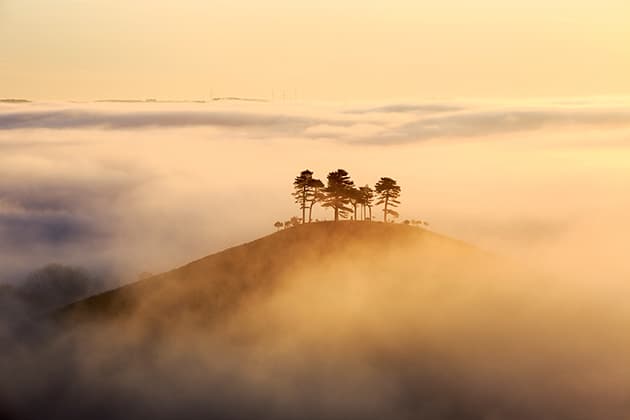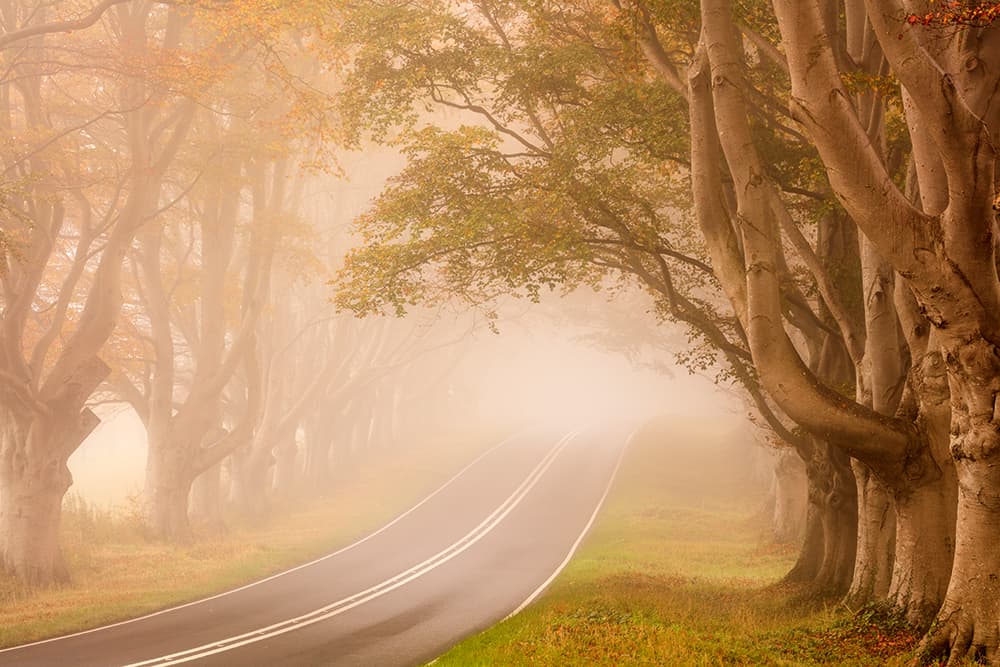
Telephoto lenses are excellent tools for simplifying compositions, allowing you to close in on shapes and lines in the landscape. Canon EOS 5DS, 70-300mm, 0.5sec at f/16, ISO100
Landscape photography is most strongly associated with wide-angle lenses – to the point where some photographers even refer to their wideangles as ‘landscape’ lenses. The attraction is obvious: they help you capture sweeping vistas, get in close to foreground interest to exaggerate linear perspective and make the most of big skies. However, if you only ever shoot wideangle landscapes, your pictures could end up becoming a little predictable and ‘stale’.
To add variety, substitute a telephoto lens for a wideangle from time to time, which will give a completely different look to your images. Instead of stretching perspective out behind the foreground, telephoto lenses seem to compress perspective and bring backgrounds closer to foregrounds. They are also useful for picking out distant details and isolating patterns in the landscape.
So what is a telephoto lens? Technically, on a full-frame camera, a 50mm lens is considered standard, as it gives roughly the same field of view as human vision (this is approximately 33mm on an APS-C sensor). Anything shorter is a wideangle, and anything longer is a telephoto. However, although a lens as short as 60mm is, strictly speaking, a telephoto, most photographers would consider that true telephoto lengths begin at around 80mm on a full-frame camera and 55mm on APS-C.
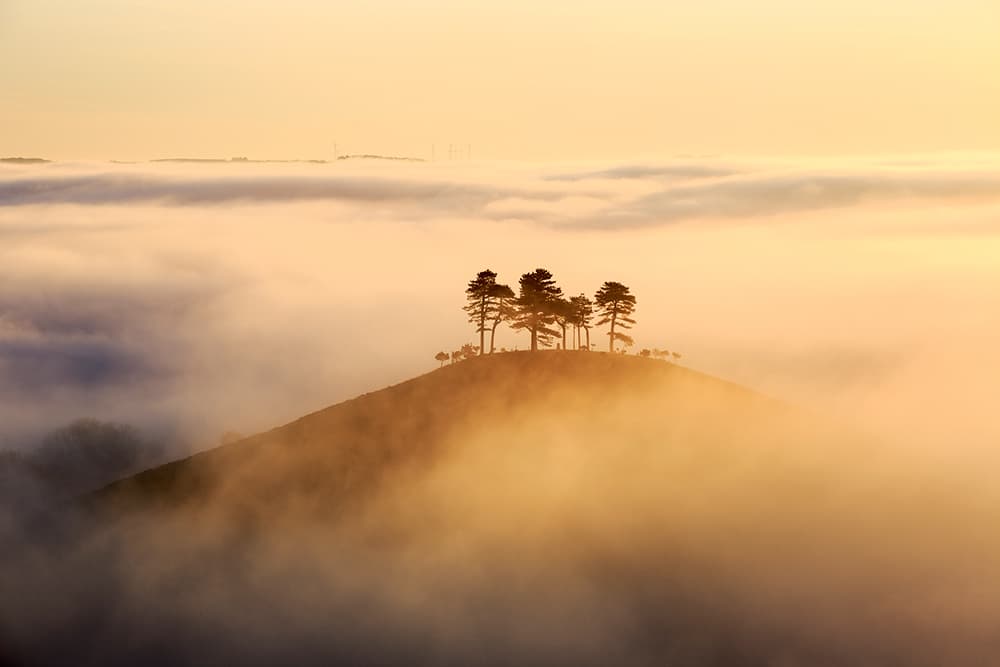
Longer lenses are ideal for enhancing the impact of dramatic lighting. Here, the backlit mist and silhouetted trees are given centre stage. Canon EOS 5D Mark III, 70-200mm, 1/100sec at f/11, ISO100, Lee 0.9 soft grad
Perspective
We often talk about the way telephoto lenses compress perspective, but this is not technically true. Perspective is simply an effect of camera-to- subject distance: the further you are from your subject, the smaller the gap appears to be between it and the background. In order to shoot successfully from further away you need to use longer focal lengths, so telephotos naturally become associated with this foreshortening effect.
Composing landscapes with telephoto lenses is rather different to wideangles. With wideangles, you’re usually looking to create depth and a sense of perspective by getting in close to foreground interest and using leading lines to guide the eye through a composition. Telephoto lenses, on the other hand, come into their own when you’re looking to pick out distant details and patterns, or seeking structure within a chaotic environment.

Simpler compositions are often the most effective, and longer lenses allow you to crop in, remove distractions and concentrate on the essential elements in a composition. Canon EOS 5D Mark II, 70-200mm, 0.8sec at f/16, ISO100, Lee 0.6 hard grad
Telephoto treatment
Rural landscapes of gentle, rolling hills really lend themselves to the telephoto treatment, as you can close in on the shapes and textures, stripping away any unnecessary elements in the composition. Generally, these kind of layered landscapes, with overlapping forms and interlocking shapes look their best when shot with longer lenses. Telephotos are great for simplifying scenes – look for strong, solitary elements in the landscape, such as a lone tree, and then fill the frame with it.
However, not all landscapes benefit from being shot with long lenses. Flat landscapes are more suited to wideangles, so you can include lots of foreground interest and make the most of dramatic skies. Likewise, coastal landscapes often look best with strong foreground interest and can be more suited to a wideangle look.
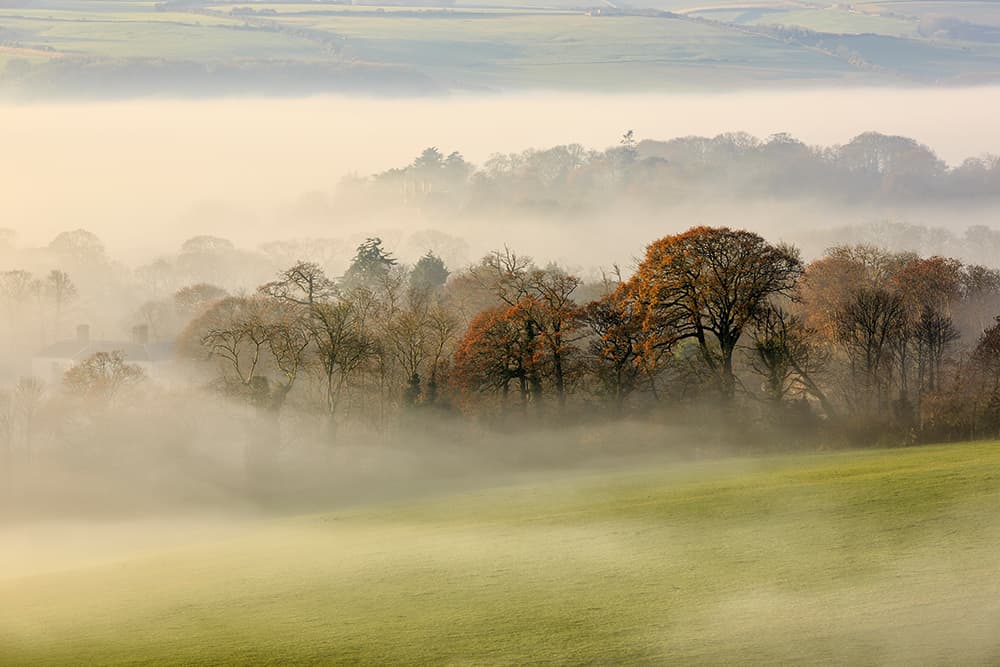
Telephotos are often the first choice when shooting on a misty morning; you can crop in tightly on the treetops rising above the mist. Canon EOS 5D Mark III, 70-200mm,1/50sec at f/11, ISO100
Technical challenges
The technical challenges of telephoto landscape photography also differ to those of wideangle shots. Most obviously, you’ll be working with much less depth of field and may therefore have to stop your lens down further in order to maintain front-to-back sharpness. With less depth of field, accurate focusing becomes even more important – use live view and manual focusing for greater precision. If the landscape you’re shooting is very distant, however, depth of field is not an issue; in this case, you should select a mid-range aperture such as f/8, where most lenses perform at their sharpest.
Atmospheric haze is a potential problem with telephotos; with a distant subject, and the greater magnification of a telephoto lens, the effects of haze become exaggerated. While mist and fog can add to the mood of a composition, heat haze, dust and pollution simply cause a lack of contrast and clarity. Shooting on cool days and in the early morning can help to reduce these problems.
The biggest potential problem, though, is vibration. Even a fairly light wind can cause problems, so you need a sturdy tripod. If necessary, further stability can be added by hanging your camera bag from the tripod for additional weight – I prefer to attach the bag with a bungee strap and let the bag sit on the ground. In this way, you still get the additional weight, but the bag won’t swing around and cause more vibrations.
Setting the tripod up lower to the ground can also increase stability, and removing the lens hood helps – these can catch the wind, a bit like sails, if you’re not careful. You can try shielding the camera with your body, and if you have to, increase the ISO so you can get a fast enough shutter speed to prevent camera shake.
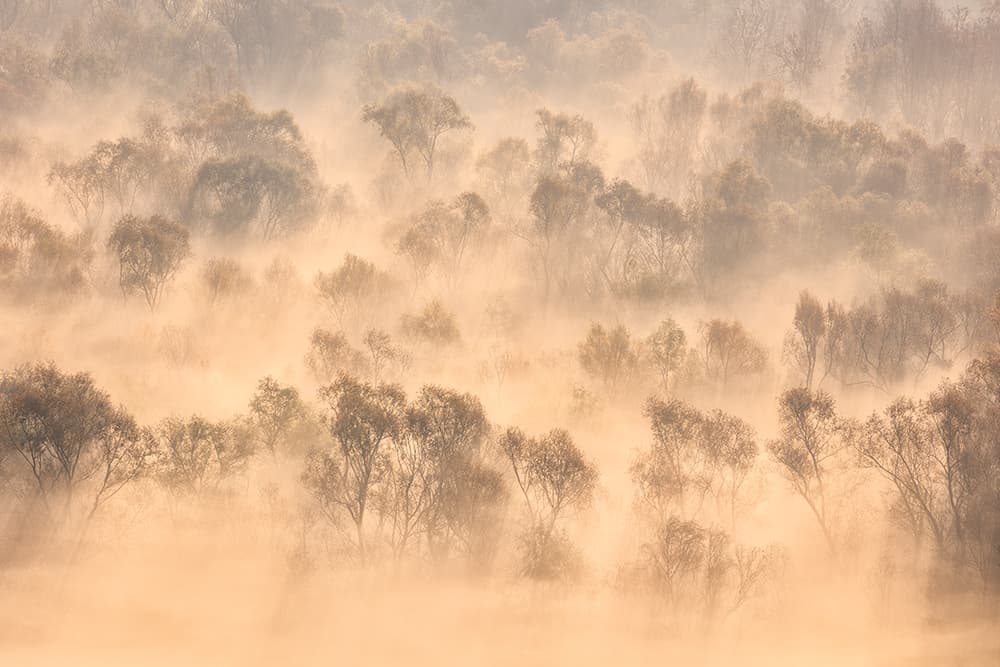
One of the most common uses of telephoto lenses in landscape photography is to pick out patterns in distant landscapes. Canon EOS 5DS, 70-300mm,1/100sec at f/11, ISO100
On a budget
The disadvantage of telephoto lenses is that they can be expensive. For example, the Canon EF 70-200mm f/2.8L IS II USM is around £1,500, as is the AF-S Nikkor 70-200mm f/2.8G ED VR II. However, there are cheaper alternatives. If you can live without image stabilisation and don’t mind the slightly smaller aperture of f/4, the Canon EF 70-200mm f/4L USM is less than £500 and if you’re happy with third-party lenses, the Tamron 70-300mm f/4-5.6 SP Di VC USD has a street price of under £250.
Wideangle vs telephoto view
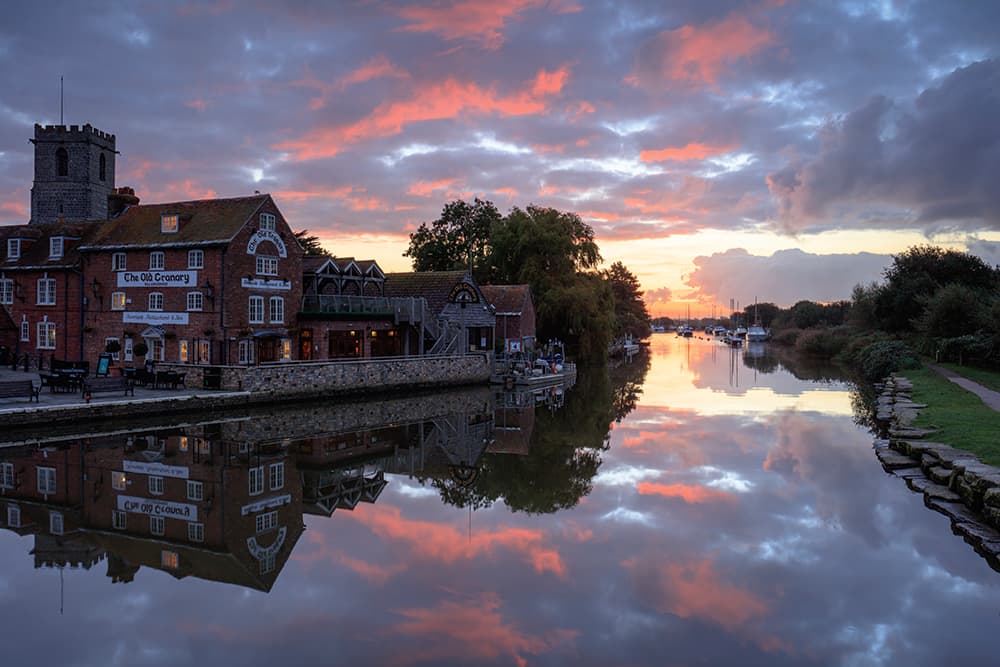
Wideangle shot
The wideangle view of this scene above (shot at 29mm) is interesting enough and the reflections of the colourful sky in the calm water are effective. however, the composition is a little busy and there are some untidy distractions on the left of the frame. The same scene shot at 160mm is much more dynamic; the distracting elements are kept out of the frame and the distant boats become much more prominent, providing a stronger focal point. There is also much more impact from the dawn colour, as it now fills the frame, providing a striking backdrop for the scene.

Wideangle shot
Mark’s top tips for telephoto landscape photography
Location choice
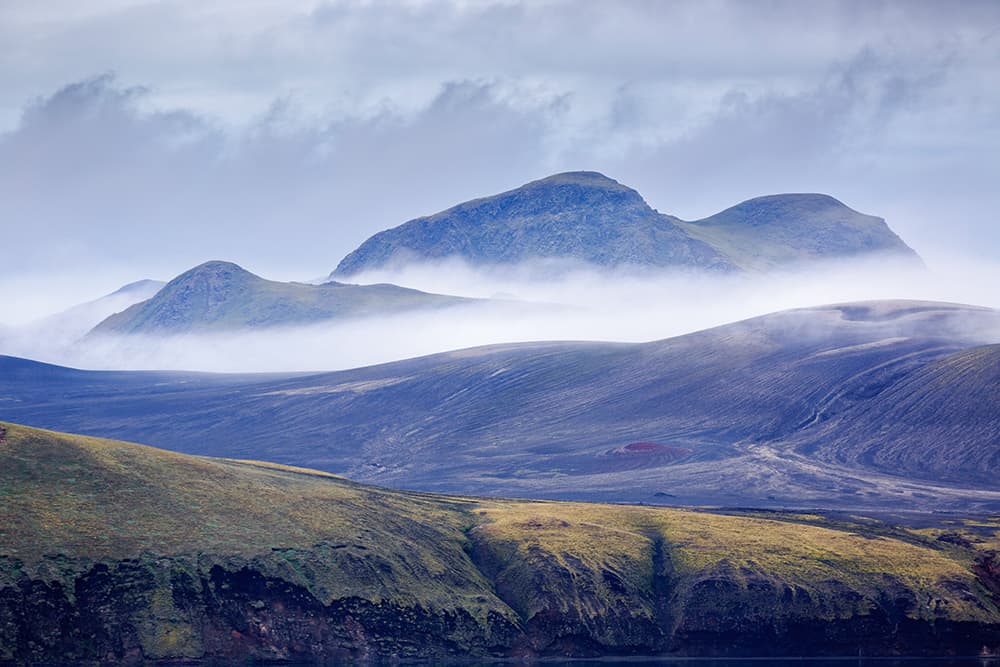
Higher viewpoints work well, especially with several clear planes of view – for example, looking across a range of hills. The compression effect of shooting from a distance with a long lens can create a strong link between foreground and background.
Depth of field
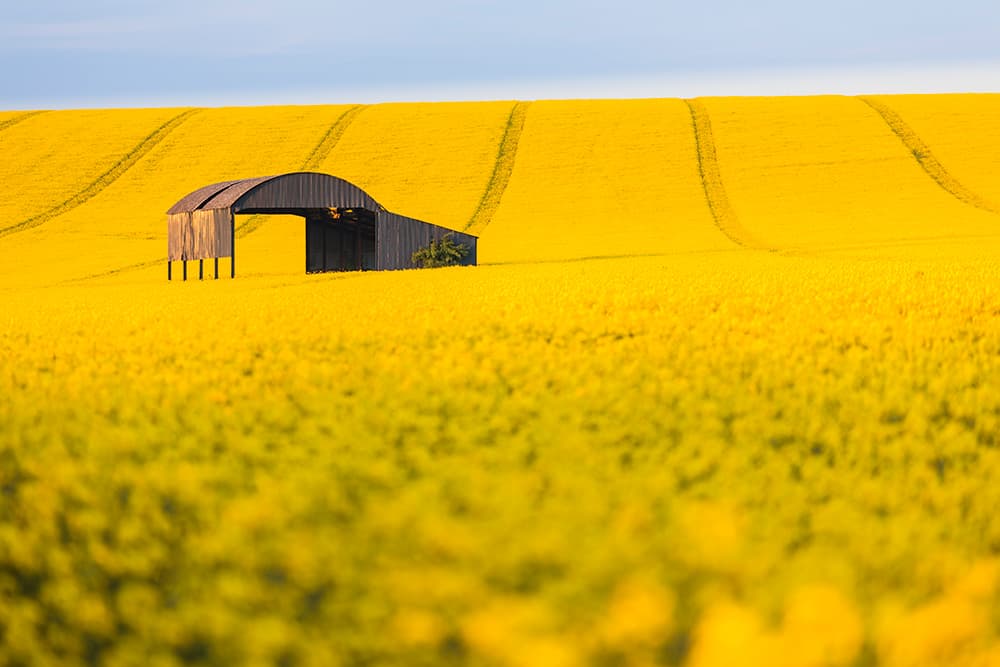
Be creative with depth of field. With landscape photography, it’s tempting to try to maximise depth of field, but you can also exploit the inherently narrow depth of field of longer lenses for creative effect, by throwing the foreground out of focus, for example.
Shoot silhouettes

Telephoto lenses are great for isolating individual features. If there is a colourful sky, then you can meter for that, deliberately underexposing the subject, to create a bold silhouette. This technique works best with identifiable subjects, such as this windmill.
Reduce vibrations

Use mirror lock-up to prevent vibrations from the movement of the mirror on a DSLR. If you shoot in live view, you can also use the magnify function to see how much shake is being caused by the wind, and trip the shutter when there is the least movement.
Shoot in the right conditions
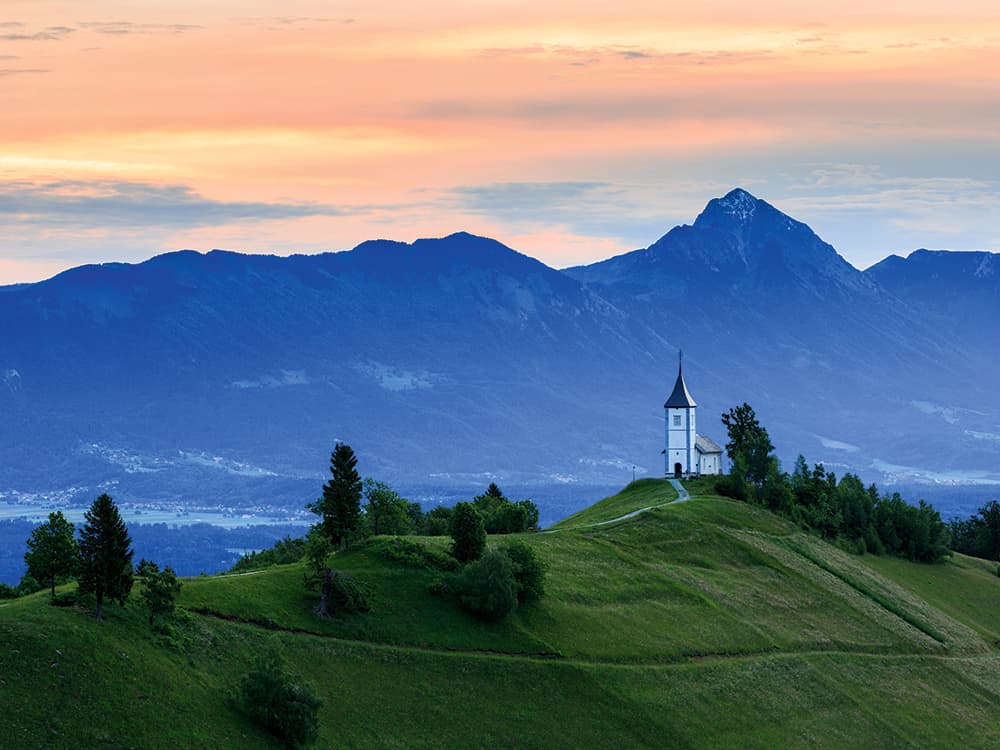
Atmospheric haze can reduce clarity when shooting with long lenses. To prevent it, shoot in the right conditions at the right time of day. There is less haze on cool days, and in early morning there tend to be fewer airborne particles.
Zoom in on details

Telephoto lenses are excellent for abstracting details from the landscape and closing in on patterns and texture, such as these backlit waves on a stormy day.
Kit list for telephoto landscape photography
Tripod
It is essential to keep everything as steady as possible, especially at the slower shutter speeds usually associated with landscape photography. You need a tripod that is sturdy enough to support heavy lenses.
Good tripod head
A decent tripod head is often overlooked, but a sturdy tripod is no good without a decent head. Make sure yours has a load capacity that is greater than your camera/lens combination.
Bungee cord
Put your bag on the ground under the tripod and then attach it to the tripod with a bungee cord to add extra weight and stability to your set-up.
Tripod collar
Mounting the lens to the tripod via a tripod collar provides much more stability than mounting the camera to the tripod, as well as reducing strain on the lens mount.
Telephoto zoom
These lenses are much more flexible than primes; a tele zoom will allow very precise framing for long-lens photography. A zoom in the region of 70-200mm is ideal
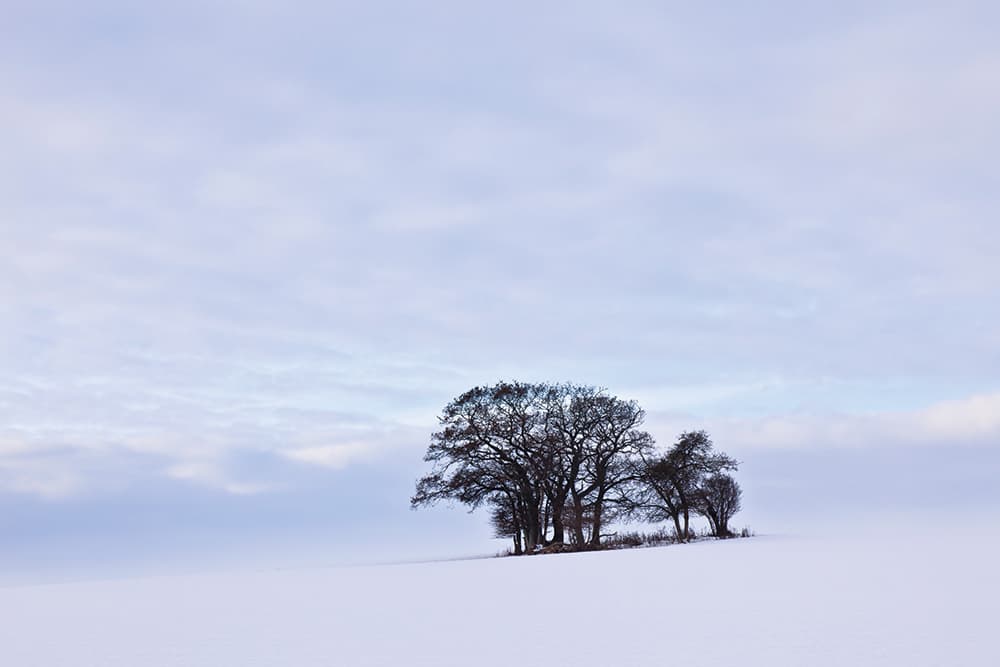
Although we often concentrate on creating the illusion of depth in landscape photography, the flattened perspective created by shooting with longer focal lengths can also be an effective technique. Canon EOS 5D Mark II, 24-105mm, 1/20sec at f/11, ISO100, polariser
Mark Bauer has been a full-time landscape photographer for more than a decade and takes inspiration from the landscapes in the southwest of England. www.markbauerphotography.com

